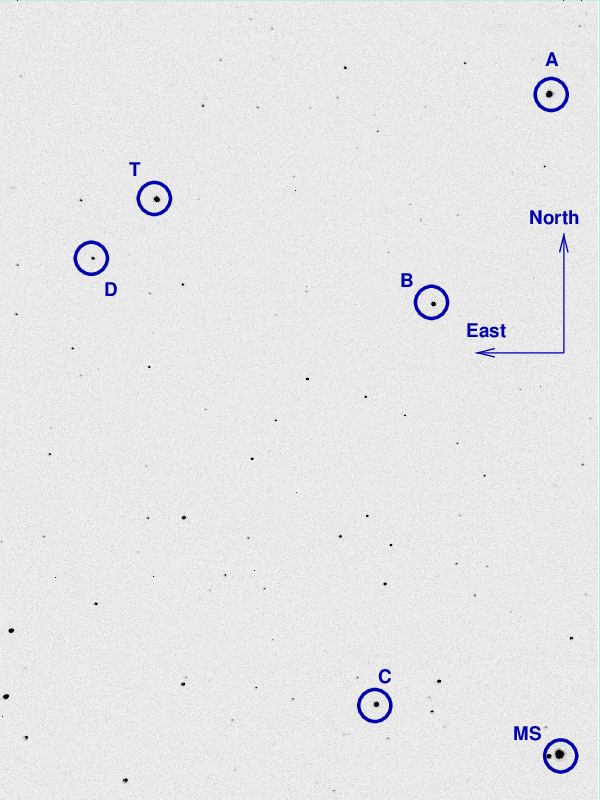
On the night of Aug 21/22, 2025, under very good conditions, I acquired images of the recurrent nova T CrB. This star undergoes outbursts at long intervals of 80 years or so. Its next outburst is predicted to occur soon (but then again, it was also predicted to occur during 2024), and so I've joined the crowd who are monitoring it.
Very good conditions tonight, but T CrB remains quiescent.
I also participated in a test of the SNEWS network, making short observations of two pretend SN candidates.
In unhappy news, the three big beautiful trees in the back yard of the observatory, including the mulberry tree, were cut down and removed, as they were diseased and were at risk of falling onto the fence surrounding the domes. I am sad that they are gone.
This recurrent nova brightens by about 8 magnitudes (!), from V = 10 to about V = 2, around every 80 years. Will we see another outburst THIS summer?
These observations involved:
Notes from the night:
The picture below shows a cropped image of the field of T CrB from Jun 14/15, 2024. The field of view is about 20 arcminutes across.

I've marked the location of several comparison stars, with magnitudes and names taken from the AAVSO's table X40237AAS. Note that the magnitudes listed for stars "A" and "B" have changed from the ones I listed in last year's notes.
star name B V
------------------------------------------------------
A 000-BJS-901 11.096 10.554
B 000-BBW-805 11.779 11.166
C 000-BPC-198 13.049 12.336
--------------------------------------------------------------------------
When the target is centered, the finder TV shows this field:
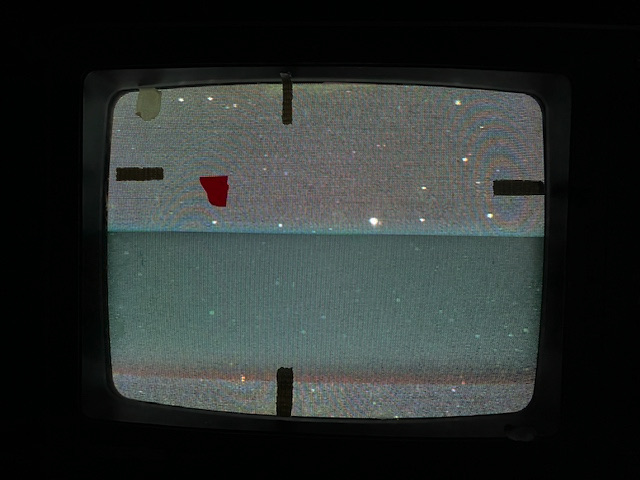
Here's the sky background over the course of the run. It was clear during the run.
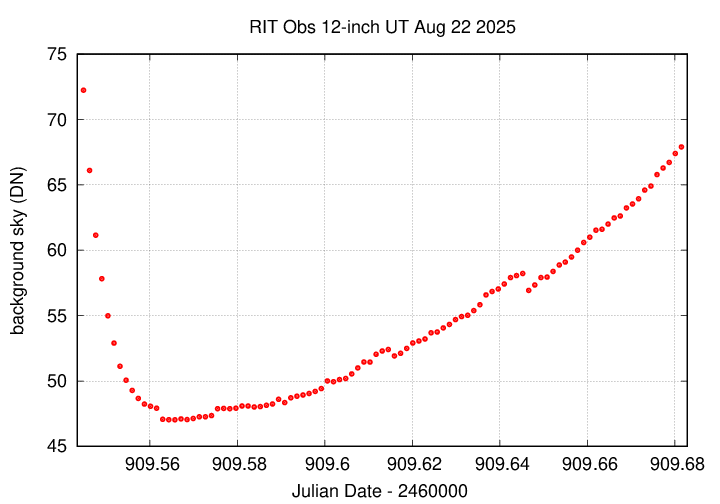
The FWHM was steady.
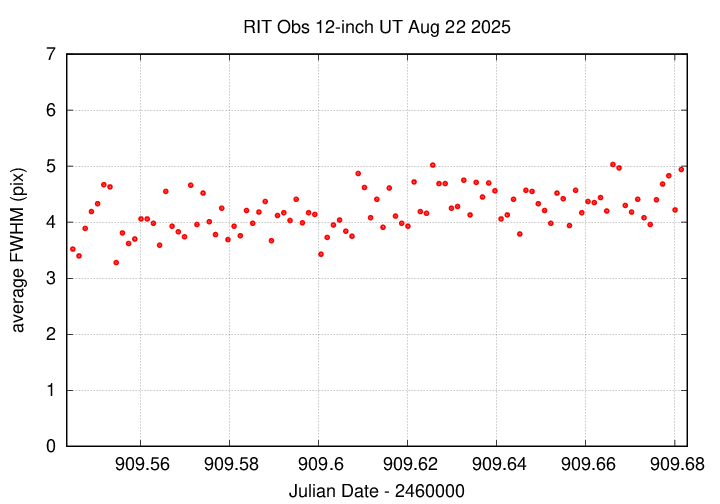
The graph below shows changes in the photometric zeropoint of an ensemble solution of the instrumental magnitudes over the course of the run. No outliers due to trailing or clouds.
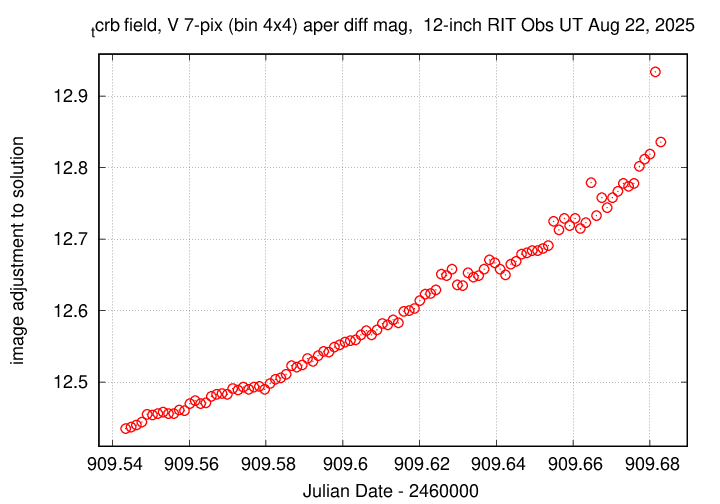
Using aperture photometry with a radius of 7 pixels in V filter (binned 4x4, each pixel is 1.036 arcsec, so a radius of 7.3 arcsec), and 7 pixels in B filter (binned 4x4, each pixel is 1.036 arcsec, so a radius of 7.3 arcsec), I measured the instrumental magnitudes of a number of reference stars and the target. Following the procedures outlined by Kent Honeycutt's article on inhomogeneous ensemble photometry, I used all stars available in each image to define a reference frame, and measured each star against this frame.
Sigma-vs-mag plots show that the floor in V-band was about 0.006 mag in V, very nice; it was 0.007 in B.
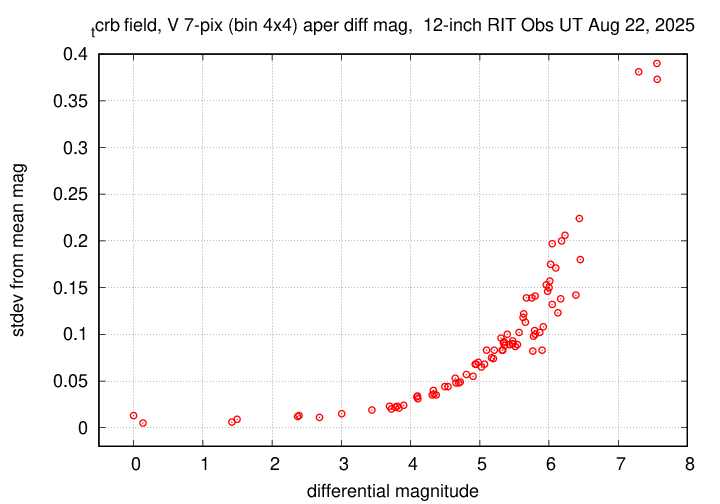
The measurements show that the target is still in quiescent phase.
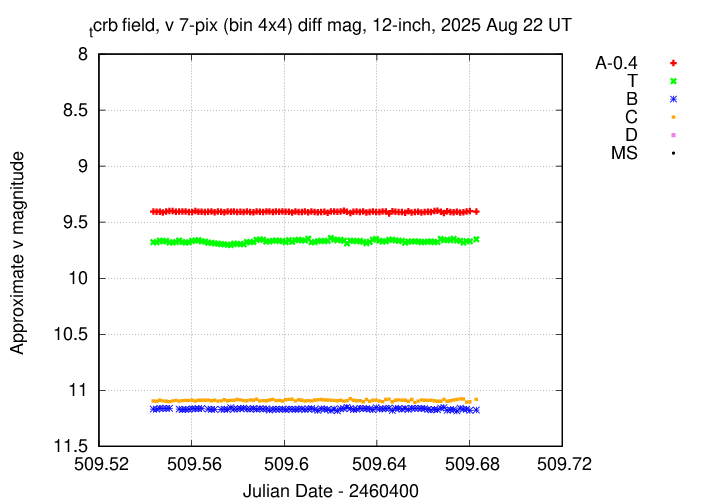
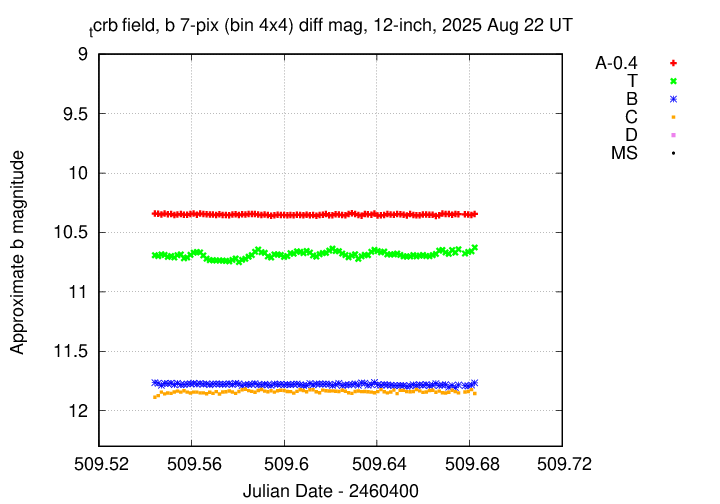
I've submitted these measurements to the AAVSO.
The SuperNova Early Warning System (SNEWS) is a project which aims to detect the next supernova in the Milky Way via its neutrino emission, and then alert observers to watch for the optical emission.
I've joined the effort. I hope that there IS another supernova in our Galaxy while I can still measure it ...
The team put out "fire drill" to test its alert service. A message was sent out on Thursday night, Aug 21, when I was already out at the observatory to monitor T CrB. So, when it had set, I tried looking at two of the test objects on their "fire drill" list: V492 Aql and HD 163826.
I'll report my results and methods to the SNEWS team when they distribute a post-drill survey.
Let's hope they provide a REAL alert some time in the near future!